The ebook reader market has steadily segmented into two niches: the entry-level, non wireless devices and the generally store-affiliated, connectivity-stuffed models. Astak’s EZ Reader falls resolutely into the former category, a compact tablet with a 5-inch E Ink display and basic functionality. Amid the Kindles and Nooks of the world is there room for the EZ Reader? Check out the full SlashGear review after the cut.
With no wireless to consider, the spec list for the EZ Reader is pretty straightforward. The 6 x 4.1 x 0.4 inch device is smaller than the average paperback novel, and just leaves room for a 5-inch 600 x 800 E Ink display and a few rows of shortcut buttons. Onboard storage is 512MB but there’s an SD card slot content with up to 16GB cards (and a USB 2.0 connection to make transferring files straightforward). The underlying OS is Linux, running on a Samsung ARM 9 400MHz processor; it’s certainly nippy enough that any page navigation delay is a side-effect of the e-paper rather than the system itself. Battery on the unit is user replaceable and provides roughly two weeks of reading time.
As you’d hope, there’s a broad range of format support for ebooks (and other files). The EZ Reader will display ADE, PDF, TXT, PDB, DOC, HTML, FB2, LIT, EPUB and PRC ebook files, together with BMP, JPG, TIF, PNG and GIF images, while there’s also a mediaplayer that will load MP3 files and play them in the background as you read. Astak have also built in some fancy text reflowing technology which handles PDF text reasonably well, even when the original document wasn’t really intended for ebook reader use, and there’s text-to-speech which is as clunky as you’d expect (but no doubt interesting to some users).
There’s no QWERTY keyboard or touchscreen, but given you’ll only be using the hardware controls to navigate files already on the EZ Reader, rather than accessing some sort of wireless ebook store, that’s less of an issue. Both right- and left-handed use is accommodated, using either page back/forward keys (on the left) or a scroll-wheel (on the right). At 6oz it’s easy to hold in one hand, and to do so for reasonably extended periods.
What sets the EZ Reader apart from some rivals is in its reading flexibility. Not only does it come with multiple language support – including English, French, Spanish, Chinese, Japanese and more – you can install your own fonts to use rather than the default set. At least three zoom levels are available, and the E Ink panel seemed to boast better contrast than Amazon’s second-gen Kindle, with text looking blacker and more defined.
Amazon have spent big money on their Kindle UI, and the shortcomings of the EZ Reader are obvious after even a brief play. Lists are navigated via the numbered keys under the display (you bizarrely can’t use the jog-wheel on the side to scroll through them) and there’s more digging through menus than we’d like. Still, we’re guessing the sort of audience who’ll buy something like this Astak will be slightly more tech-savvy than, say, a Kindle buyer; they’ll need to understand how to side-load content, after all.
It’s easy to knock ebook readers that don’t include wireless connectivity; after all, an integrated 3G hook-up means you’re more than halfway to an eye-catching headline. Still, what it actually means is that there’s no one-click way to wireless spend money at a specific ebook store, and for many users that’s not something they actually want or need. In fact, there are plenty of reasons – cost being just one of them – where relying on the flexibility of side-loading content makes perfect sense.
The Astak EZ Reader doesn’t exactly grab the eye like a Kindle or Barnes and Noble Nook, but it’s reasonably flexible. The display may be compact at 5-inches, but that allows the device as a whole to be particularly portable; after all, just as the best camera is the one you have with you, the best ebook reader is the one you always drop into your bag as you leave the house. Our biggest disappointment is that Astak haven’t done some extra work to bring the price down: at $199 it’s close to Amazon and Barnes and Noble’s ebook reader offerings, and we reckon if the company undercut those by $100 or so then they’d have a decent competitor on their hands.
We’ve had two QWERTY Nokia smartphones on the SlashGear test-bench this past week, and the surprising thing is how differently the respective user experience is. Our Nokia E72 review went live earlier today; now we turn to the Nokia N97 mini, viewed by many – for better or for worse – as the Finnish company’s second attempt at the N97. Second-time lucky or still well short? Check out the full SlashGear review after the cut.
To understand the N97 mini, you have to put it into context with the original N97 it’s a “miniaturised” version of. The Nokia N97 practically epitomises the difficulty in balancing hype, consumer anticipation, cutting-edge hardware and delivery schedules: when it was first announced in December 2008 it promised a compelling package of the latest in smartphone technology, but by the time it hit reviewers’ hands in June 2009 it proved to fall well short of expectations.
Since then Nokia have pushed out a significant new firmware release that addressed many issues with the original smartphone, and of course they’ve also delivered the N97 mini, a more compact version of the N97 intended to address many of its shortcomings. We pulled no punches in our N97 review, so the N97 mini has plenty of work to do in order to impress us.
Physically, as you might imagine, it’s a smaller phone. The original N97 is 117.2 x 55.3 x 15.9 mm, tipping the scales at 150g, while the N97 mini is 113 x 52.5 x 14.2 mm and 138g. That means there’s less room for the display – which slips from 3.5- to 3.2-inches, though sticks at 640 x 360 resolution – but it also means it’s a far more pocket-friendly handset. Interestingly, there are minimal hardware concessions involved elsewhere: the N97 mini doesn’t have a sliding lens cover, but it does keep the 5-megapixel autofocus camera with Carl Zeiss optics and dual-LED flash, together with a front-facing camera for video calling. The GPS and A-GPS are still present, together with ambient light, orientation and proximity sensors, and connectivity doesn’t fall short either: the N97 mini is packed with quadband WCMDA 850/900/1900/2100 as well as Bluetooth 2.0+EDR, WiFi b/g, a microUSB 2.0 connection and a 3.5mm headphones socket. You also still get the unusual form-factor, with a sliding-tilting display that is strongly spring-loaded. That reveals the redesigned keyboard, the biggest change of which is the removal of the D-pad on the left and the introduction of four regular arrow keys. We were scathing in our feedback of the N97’s keyboard, criticising its lack of travel and poor finger-feedback; the N97 mini’s ‘board is better, with buttons that are certainly more responsive than on its bigger sibling, while the missing D-pad means there’s less reaching to be done with the left thumb. Still, it’s not a home-run by any stretch of the imagination and there’s a sluggishness to the response that makes typing feel slower than on other hardware keyboards. Nokia have increased the size of the spacebar – which is still offset, and sits just underneath where your right thumb rests – and the function key is better placed on the far left rather than the far right.
Unfortunately you’re still stuck with the one-position screen angle, which is results in plenty of hand-tilting as you try to thumb-type and see the display at the best angle. The touchscreen itself uses a resistive panel rather than the currently fashionable capacitive, but is reasonably responsive and accurate nonetheless. OS is S60 5th edition, Nokia’s attempt to bring finger-friendliness to Symbian, and it remains a mixed bag. The recent firmware 2.0 update for the N97 also applies to the N97 mini, and addresses many of our original complaints, particularly in terms of the visual appeal and the introduction of “kinetic scrolling”.
It’s still not as attractive as, say, Palm’s webOS or the iPhone, and many of the menus still seem to merely be bigger – i.e. finger-sized – than they were before. Lists continue to respond differently to taps depending on whereabouts in the OS you are: settings, for instance, usually respond to a single tap, whereas lists of items (such as email messages) take one tap to select and another to open. We can partly see the logic in this, but when other platforms use the more intuitive press-and-hold to deliver the same, Nokia’s system begins to look unnecessarily fiddly.
The display aspect is less than ideal too, particularly when you’re dealing with emails. We can’t find any way to show the email list with sender and subject split across two lines, and as such you get both a sharply truncated name and very little of the subject line. It’s difficult to triage your inbox without actually going into the message itself, which adds a few unwanted steps to the process. On the plus side, the N97 mini does have extensive email account support, including the basic POP and IMAP together with Mail for Exchange, and where the E72 dropped the ball in dealing with our Exchange-like Kerio Mail Server, the mini handled it with no problems whatsoever. We did experience a couple of odd connection issues, however, where the smartphone would “forget” by which method it was meant to pull in new emails; we wish Nokia would make things a little more straightforward, using whatever the active connection is (whether WiFi or 3G) without the user needing to be so prescriptive.
Like the E72, the N97 mini’s browser supports full HTML with in-page Flash video, which means no separate app is required to play back YouTube content (among others). Of course there’s still no multitouch zooming, and instead the N97 mini uses double-tap to zoom; unfortunately webpage text doesn’t reflow accordingly, and despite the accelerometer the screen orientation doesn’t flip even if you turn the phone on its side, you have to push out the keyboard in order to get a landscape view. Still, pages render pretty much as you’d expect from a desktop browser.
Firmware 2.0 also brought with it the latest version of Nokia Maps, and as with the E72 it’s been a pleasing experience seeing what the rivals of Google Maps have come up with. The N97 mini includes a digital compass and locks onto a GPS signal quickly, while the app itself does a better job than its rival in presenting that data on-screen. Various map-types are provided, including a traffic overlay, and it’s just as easy to pull up walking directions as it is driving (though once the trial licence of pedestrian directions runs out, you’ll need to pay for the functionality). There are still no spoken guidance prompts, however, unlike the Google Maps Navigation beta for Android in the US.
Nokia have won many admirers over the past year or two with the quality of their cameras, and the N97 mini’s 5-megapixel autofocus shooter is reasonable. Our general dislike of LED flashes – which we find have a very narrow “sweet spot” outside of which they either over-saturate the subject or prove hopelessly lacking in power – is tempered by decent low-light performance with the flash switched off. Give the N97 mini an outdoor shot however and you’ll find acceptable results; we were also particularly impressed by the macro close-ups, with the phone automatically switching into the necessary mode to keep nearby subjects in crisp focus. The onboard 8GB of memory is less than the original N97’s 32GB, but slot in a microSD card and you’ll have up to 24GB to play with. You can find sample shots in the gallery below.
The camera will also shoot 30fps 16:9 aspect video in MPEG4 640 x 360 resolution, which turned out to be smooth and reasonably watchable. You can switch on the LED flash to act as a video light, though autofocus no longer works. Once you’ve shot a clip you can upload it to various media sharing sites, including Flickr and Nokia’s own Ovi gallery.
As for consuming media rather than producing it, the N97 mini has the same audio app as on the E72 only with larger, finger-accomodating icons. The interface is lacking in comparison to something like the iPhone, but it’s serviceable and there’s a link directly to Nokia’s Music Store (though not Comes With Music, which the company don’t offer on this handset) for on-device downloads. As with the N97 there’s an FM radio (which requires a wired headset be plugged in) but no FM transmitter; Nokia say the short-range transmitter – handy for in-car use – couldn’t be squeezed into the N97 mini’s reduced casing. Video playback is in a separate app, and consists of a simple folder-browsing UI for local content together with a Video Feeds browser which allows you to access streaming content.
Access to all of these apps is usually through the main menu, called up no matter where you are in the phone by pressing the single hardware button on the fascia. However, like its sibling, the N97 mini’s homescreen is made up of six rectangular widget panels which can be rearranged and edited. Among the options are standard shortcut bars – each offering room for four icons linking to your commonly-accessed apps – as well as frequent contact shortcuts, an AccuWeather forecast widget, Mail for Exchange widget and a clock with links to the alarm settings and calendar. There’s also a Facebook widget which ties into Nokia’s somewhat sluggish Facebook app. This shows galleries, wall posts and offers one-tap access to the camera and on-device gallery so as to make uploading shots easier, but is tardy in its responsiveness – especially when updating the Facebook wall – compared to similar apps on rival platforms.
Phone performance was strong, with the N97 mini tenacious with a signal. We experienced no dropped calls in all of our testing, and both parties reported clear and crackle-free audio. Battery life has proven slightly better than what you’d expect from a current-gen smartphone, capable of going two days with regular use (and judicious use of the peak/off-peak push email settings). Nokia quote up to 430 minutes of GSM talktime (240 minutes of WCDMA) or up to 320 hours of GSM standby (310 hours of WCDMA).
Build quality is better than the N97, with a sturdy case and touches of metal in the screen fascia and battery cover; we’re also quiet fans of the “cherry black” finish (though you can also get the N97 mini in “garnet”). Less impressive is the flex in the plastic screen surround up above the earpiece, though to be fair that’s our only real point of concern about the N97 mini’s construction.
Overall, then, we feel a whole lot warmer toward the Nokia N97 mini than we did toward the original N97. Its slimmed-down design and improved software have taken much of the sting out of ownership, and the compromises – the absence of an FM transmitter and the smaller onboard storage – are minor in comparison to the far better keyboard and sturdier build. Still, none of what it offers is quite a home-run in the smartphone game right now; the OS is improved but still feels drab and mildly clunky in comparison to rival platforms, and the QWERTY ‘board is a long way off the best we’ve played with in recent months.
Bizarrely, if they’ve beaten anything, Nokia have killed off enthusiasm for the N97; the two handsets will go on sale alongside each other, and the UK store even has the N97 mini at £429 and the original at £449. Having lived with the N97 mini we’re not sure why anybody would plump for the original, frankly. As for the mini itself, we must admit to being more enthusiastic about the Maemo OS and its potential than we are about this current device. Nokia obviously have some good ideas left in them, but the N97 mini feels like what the original N97 should have been, rather than a new product in its own right.
You have to give HP and AT&T some credit: it takes guts to call your new smartphone the HP iPAQ Glisten. Kicking off with a name that turns some peoples’ stomachs doesn’t seem like a particularly clever plan, but AT&T are hoping that the specifications of this particular 3G world-phone will help them see past the unusual moniker.
The iPAQ Glisten gets an AMOLED touchscreen display, Windows Mobile 6.5 OS and a 3.1-megapixel camera, together with both WiFi and GPS. They’ve also packed it with all the 3G bands you’ll need not only in the US but while traveling too, though you’ll obviously have to deal with AT&T’s roaming rates as well.
All the usual Windows Phone enhancements are here, including Windows Marketplace for Mobile, IE Mobile 6 and the Facebook app, and there’s also a dedicated WiFi control button and access to AT&T’s 20,000 WiFi hotspots. The HP iPAQ Glisten will be available “in the coming weeks” priced at $229.99 after a $50 rebate and assuming a new, two-year agreement.
AT&T and HP Introduce HP iPAQ Glisten, 3G World Phone for Mobile Professionals
Dallas, Texas, November 24, 2009
AT&T* and HP (NYSE: HPQ) today announced the upcoming availability of the new HP iPAQ Glisten, a feature-rich 3G world phone that meets the increasing demands of modern mobile professionals. AT&T’s first smartphone with an AMOLED (active-matrix organic light-emitting diode) screen, the HP iPAQ Glisten is loaded with features tailored with the business power user in mind.
Featuring the Microsoft Windows® Mobile 6.5 operating system, the iPAQ Glisten offers a touch-friendly user interface and improved browser with Flash support. Connections to your favorite people, content and applications are a fingertip away on the redesigned Start Menu, and Internet Explorer Mobile** supports the rich experiences that many Web pages offer for desktop computers.
Users can easily move between work and leisure with advanced mobile e-mail capabilities, built-in Wi-Fi and GPS functionality as well as rich multimedia features and applications. AT&T supports Windows Marketplace for Mobile for access to a variety of applications.
The iPAQ Glisten features a full QWERTY keyboard and five-way directional pad for fast, easy and accurate messaging including SMS/MMS and e-mail. The touch-enabled AMOLED screen, among the best displays on the market, allows users to easily navigate through menus, windows, and links with the touch of a finger.
“iPAQ Glisten adds to our innovative Windows Phone portfolio,” said Michael Woodward, vice president, Mobile Phone Portfolio, AT&T Mobility and Consumer Markets. “It meets the demands of our business customers while boasting a beautiful AMOLED touch screen and a full package of multimedia features.”
“The iPAQ Glisten packs a powerful punch with its multiple input methods, variety of connectivity options, and a familiar, consistent email experience that allows mobile professionals to connect with the people and information that matter most to them,” said Susan Macke, vice president, Marketing, Handheld Global Business Unit, Personal Systems Group, HP. “Our strategy for success in growing the iPAQ business and customer base is working with industry leaders, like AT&T and Microsoft, and leveraging our collective strengths in the business and prosumer markets.”
Manage and take control of demanding professional lifestyles
Power users stay more connected with Outlook calendaring, Microsoft Word and Excel as well as the ability to view Microsoft PowerPoint and Adobe PDF documents. The HP iPAQ Glisten gives users the ability to manage a single contact list and synchronize them wirelessly or with a PC using a supported e-mail account. It also comes with an integrated inbox that summarizes recent emails, calls, and texts.
In addition, users can take advantage of the built-in speakerphone and enjoy the freedom of hands-free control with Voice Commander, voice recognition software which reads text messages, emails and appointment details and lets users begin messages and dial contacts using simple voice prompts.
Bridge work and social life
Web browsing and streaming video on the HP iPAQ Glisten are fast and enjoyable with the improved Internet Explorer Mobile 6. Users can turn on the built-in Wi-Fi quickly with a dedicated on/off button and enjoy high-speed Internet access – featuring automatic access to over 20,000 AT&T Wi-Fi hotspots included at no additional charge with select smartphone data plans.
Users can also connect with friends and colleagues on their favorite social networking sites, including a preloaded Facebook application. Mobile professionals can capture pictures and videos with the 3.1 megapixel camera and view them in brilliant color and clarity or edit them with HP Photosmart Mobile and easily share them via email or on the Web using Snapfish.
Pricing and availability
The HP iPAQ Glisten will be available in the coming weeks for $229.99 (receive a $50 AT&T Promotion Card with two-year agreement, smartphone data plan). The smartphone will be available through AT&T business services, HP corporate sales, small and medium business and consumer Websites at AT&T.com and HP.com as well as through third-party e-commerce sites.
More information on HP iPAQ Glisten is available at www.att.com/hpipaqglisten and www.hp.com/go/glisten. For the complete array of AT&T offerings, visit www.att.com.
*AT&T products and services are provided or offered by subsidiaries and affiliates of AT&T Inc. under the AT&T brand and not by AT&T Inc.
**Advance Mobile Email Capabilities: Standard GSM/GPRS/EDGE/UMTS/HSPA infrastructure, Wi-Fi network access, other Bluetooth-enabled devices, separately purchased equipment, and a service contract with a wireless service provider may be required for applicable wireless communication. Wireless Internet access requires separately purchased Internet service contract. Check with service provider for availability and coverage in your area. Not all web content available. Normal GSM Data Calls (CSD) are not basic GSM data services. These services may not be available via all service providers, and may require separate subscription. Establishment and continuation of a wireless connection depends on network availability, provider support and signal strength. Coverage is subject to transmission limitations and terrain, system, capacity and other limitations. Wireless transmission speeds may vary due to location, environment, network capabilities and other conditions. Not all features and service options are available in all areas.
1. AT&T imposes: a Regulatory Cost Recovery Charge of up to $1.25 to help defray costs incurred in complying with obligations and charges imposed by State and Federal telecom regulations; State and Federal Universal Service charges; and surcharges for government assessments on AT&T. These fees are not taxes or government-required charges.
2. 3G coverage is not available in all areas.
3. Coverage not available in all areas.
4. AT&T Promotion Card: Price before AT&T Promotion Card & with 2 year contract is $229.99. Allow 60 days for fulfillment. Card valid for 120 days wherever major credit cards accepted. May be used to pay wireless bill. Not redeemable for cash and cannot be used at ATMs or gas pumps. Some restrictions and other charges apply. See terms at store or at att.com/wirelessrebate. You must be customer for 30 consecutive days to receive Promotion Card. Offer expires December 25, 2009.
5. Limited-time offer. Other conditions & restrictions apply. See contract & rate plan brochure for details. Subscriber must live & have a mailing addr. within AT&T’s owned wireless network coverage area. Up to $36 activ. fee applies. Equipment price & avail may vary by mrk & may not be available from independent retailers. Early Termination Fee: None if cancelled in the first 30 days, but up to $35 restocking fee may apply to equipment returns; thereafter up to $175. Some agents impose add’l fees. Offnet Usage: If your mins of data use on other carrier’s networks (“offnet usage”) during any month exceeds your offnet usage allowance, AT&T may at its option terminate your svc, deny your contd use of other carriers’ coverage, or change your plan to one imposing usage charges for offnet usage. Your data offnet usage allowance is the lesser of 24 MB or 20% of the KB incl’d with your plan).
6. Sales tax calculated based on price of unactivated equipment.
7. Standard usage rates apply to text messaging and Internet browsing, depending on your plan.
8. Nation’s largest Wi-fi network based on non-municipal company and owned and operated hotspots and an 802.11 b/g enabled device.
9. Built in GPS: purchase of GPS navigation and maps is required.
10. Voice Commander: the ‘Read email’ Voice Command feature is only available for email sent via an Outlook Exchange Server to the iPAQ Glisten Outlook Inbox.
Amazon have announced a new firmware update for their Kindle ebook reader that can apparently boost battery life by up to 85-percent. With wireless connectivity turned on, the Kindle now runs for up to seven days rather than the previous four-day battery life; however the non-wireless runtimes are unchanged, suggesting the firmware applies to the Kindle’s modem. The software also adds a native PDF reader to the ebook device.
The update is, Amazon claim, the culmination of six months of testing and tweaking, and they’re giving themselves a big pat on the back for it too. ”Battery power management for portable wireless devices” they explain “is a complex technical area”, so we should probably buy them all a drink or something.
The new firmware will be preloaded on all new Kindles, and delivered to existing “new” Kindle models via Whispernet; they haven’t confirmed a timescale for when that update will go out. Meanwhile, owners of “some” earlier Kindle models – Amazon don’t specify which – will get the PDF reader as an update. PDFs can then be copied over via a USB connection or delivered wirelessly by emailing them to the ebook reader; putting “Convert” in the subject line will trigger an automatic-conversion to Amazon’s Kindle ebook format.
Amazon Extends Battery Life of Newest Kindle by 85 Percent and Adds Native PDF Reader
Kindle Now Lasts up to Seven Days on a Single Charge with Wireless on, up from Four Days, and Displays Native PDFs in Their Original Form
SEATTLE–(BUSINESS WIRE)–Nov. 24, 2009– Amazon.com, Inc. (NASDAQ: AMZN) today announced two new enhancements to the latest generation Kindle—85 percent more battery life and a native PDF reader. Kindle now has battery life of up to seven days even with wireless turned on, a significant improvement from the previous battery life of four days. Battery life with wireless turned off remains at the previous level of up to two weeks. Battery power management for portable wireless devices is a complex technical area, and the battery life improvement announced today is the result of a six month firmware improvement and testing program.
Amazon also announced today that the 6-inch Kindle now has a built-in native PDF reader that enables Kindle customers to read professional and personal documents in their original PDF format without conversion. Kindle is in stock and available for immediate shipment today at www.amazon.com/kindle.
“Kindle, already the #1 bestselling, most wished for, and most gifted product on all of Amazon.com, is now even better—with 85 percent more battery life and a built-in PDF reader,” said Ian Freed, Vice President, Amazon Kindle. “These two significant enhancements are available now.”
To read their personal or professional documents, Kindle customers simply email PDFs to their Kindle email address or move them over using a USB connection. Customers that prefer to have their PDF documents converted to the Kindle format simply type “Convert” in the subject of the e-mail when sending documents to their “@kindle.com” address.
Amazon also announced today that previous purchasers of the new Kindle will also receive the 85 percent battery life improvements with wireless on, and native PDF support via a firmware update automatically delivered via Whispernet wireless. Native PDF support will also be available for some earlier versions of Kindle via an automatic Whispernet wireless firmware update.
The not-so-great thing about Macs is that third-party accessory manufacturers tend to view Apple owners as an ideal market to be milked, at least financially-speaking. Twelve South’s BassJump addresses a commonly-voiced problem among MacBook and MacBook Pro owners – that while the mids and trebles are reasonable, the notebooks’ bass is somewhat lacking – by offering a standalone subwoofer. Unfortunately the compact sub’ also costs $79.99
That gets you not only the BassJump itself but Twelve South’s accompanying amp app, which allows you to tweak the equaliser – to rock, pop, R&B, etc – but adjust the sub volume and the crossover. The BassJump speaker hooks up via a USB connection, which gives it both audio signal and power.
As for the sub’s specs, it uses a 77mm cone but Twelve South aren’t exactly shouting about the wattage, so we’re guessing it’s reasonably low-key in comparison to some external speaker systems. The BassJump is available now – for MacBook owners only, naturally – priced at $79.99.
LaCie seem to be going back and filling in any blanks in their mediaplayer line-up right now, neatly slotting the LaCinema Classic HD into the range. Coming somewhere in-between the non-HD LaCinema Classic and the HDD-free LaCinema Classic Bridge, the new device promises Full HD 1080p playback of various formats – including DivX, MKV, AVC and H.264 – from its 1TB internal hard-drive, together with DLNA media server support.
Connectivity includes 10/100 ethernet, HDMI 1.3, composite audio/video and several USB 2.0 ports, which can be used to attach external storage. The Classic HD plugs into a host PC or Mac and shows up as a regular external hard-drive; you can copy content across, then use it in standalone mode with the included remote control and your HDTV.
If you’ve got a DLNA-compatible mediaplayer – which includes an Xbox 360 or PS3 – you can stream content from the LaCinema Classic HD directly to them, too. It’s available to preorder now, priced at $249.99.
LaCie Unveils Full HD Media Player with DLNA™ Media Server: LaCinema Classic HD * Play HD movies in stunning full HD 1080p * Stream movies, music, photos from Mac® or PC * Store up to 1TB of HD media content * DLNA media server built-in LaCie today introduced the most complete HD multimedia hard drive player, combining Full HD 1080p playback, unsurpassed format compatibility and DLNA media server functionality – LaCinema Classic HD, design by Neil Poulton. Users can browse, play and share HD media collections from anywhere in the home, directly on HDTV. The LaCinema Classic HD offers a timeless and sleek design making it a great addition to any TV setup. Providing the widest media format compatibility, LaCinema Classic HD will play all your files without concern – from the most popular DivX format to high-quality MKV H.264 video format via its HDMI 1.3 connection. Uncompromising support for Dolby Digital audio quality enhances the LaCinema Classic HD, as well as your entertainment viewing experience. The LaCinema Classic HD keeps it easy – use it as an external hard drive to load media from your Mac or PC. Then, simply connect the LaCinema Classic HD to your HDTV for instant playback. Acting as a DLNA media player, LaCinema Classic HD can conveniently play movies, music, and photos from your computer or network storage. LaCinema Classic HD even offers network access to easily transfer files from your Mac and PC, while keeping it connected to the TV. Its unique DLNA server function ensures the LaCinema Classic HD works in tandem with your home network, acting as a media server to stream content to compatible players, such as PlayStation®3 or Xbox®. The LaCinema Classic HD boosts capacities that include up to 1TB of media storage. By using the included remote control and easy navigation interface, you have quick and convenient access to your media libraries. Additionally, the front USB port allows you to connect a USB drive or digital camera to instantly share your photos on your HDTV with friends and family. “LaCinema Classic HD is all you need to store, play and share your movies, music and photos at home. We believe organizing and playing should be simple for everyone, without concern for media compatibility or how to access media, no matter where it’s stored in your home,” said Salem Tirane, Digital Home Product Manager. At no premium, LaCinema Classic HD surpasses the usual media player experience by including a high-quality HDMI cable, Ethernet cable and the renowned DLNA Twonky Media Server for Mac and Windows. Users will be able to get the most of their multimedia contents out of the box! The LaCinema Classic HD also features the option of connecting a USB WiFi 802.11N adapter (sold separately) for wireless access to the home network. Availability LaCinema Classic HD is available through the LaCie Online Store, LaCie Reseller+, LaCie Corner, and LaCie Storage Partner, starting at the suggested retail price of $249.99. For more information, visit www.lacie.com.
Last week the trackball on my BlackBerry Curve decided to quit on me. The thing couldn’t roll down a hill if it tried and, well, the phone’s dated version of the operating system was starting to make me look like a mobile T-Rex. (I always thought if I were to be a dinosaur, I’d be a T-Rex.)
As a true CrackBerry addict, I had opted to replace my Verizon Curve 8830 with the new Curve 8530. Yes, rather than a Droid, I went with the BlackBerry because I am a Blackberry Messenger fiend, love the speed of the e-mail and my fingers can’t live without the physical keyboards. However, within a few minutes of using the new trackpad equipped Curve, I was just downright disappointed in the Canadian smartphone pioneers. What used to be a groundbreaking mobile operating system a couple of years ago, has been minimally updated with only new skins and a slightly improved interface. The attempts to catch up to the Apple iPhones, Palm Pres and Motorola Droids of the world haven’t been executed correctly.
Take RIM’s shot at its own application store. Deemed Blackberry App World, the application store is not even preloaded on the brand new device! In order to get the application portal on the smartphone I had to search for it via Google, and download the application. Yep, I had to download the application to get applications. Counterintuitive, much? I’m not sure how RIM expects its customers to know this store is even available and that it contains hundreds of applications, nonetheless that it compete with application-centric phones like the iPhone and Android that have simple, preloaded application marketplaces.
Once running, the store is actually quite nice and easy to navigate but its inventory is a different story. I couldn’t find a number of applications for my phone, including TweetGenius and TwitterBerry. And don’t think it is just a coincidence that the two missing applications were social networking based.
Sure, Facebook makes a decent application for BlackBerry, but unlike the Palm Pre or the iPhone it lacks social skills. There is no integrated contact management with the option to fill in your current address book with different social networking information. Even when new and promising features like visual voicemail seem to be preloaded, they end up requiring a download and what feels like a 10-step process to configure. Unfortunately, while RIM is attempting to bring these newer features offered by its competitors and the social Web ecosystem to its own operating system, the implementation is halfhearted.
RIM, what worked a few years ago just doesn’t anymore. Although you may continue to attract enterprise customers with superior security and e-mail, to compete today in the consumer game you need products that add simplicity, engage with Internet integration and offer easy access to compelling third-party applications. Yes, there remains a dedicated group of consumers (eh hem, me) that are still looking for the BlackBerry bread and butter – the strong email support, the speed of services like BlackBerry Messenger and good hardware – but they aren’t willing to deal with lagging features and incomplete experiences. You don’t have to reinvent the wheel (seriously, we don’t want the scroll wheel anymore), but continuing to drop the ball isn’t going to work anymore. Please, get it rolling again.
Benchmarking the very earliest publicly-available code for Google Chrome OS seems destined to only highlight the platform’s early stage of development, especially when you throw rivals such as Moblin 2.1, Ubuntu Netbook Remix 9.10, Fedora 12 and openSUSE 11.2 into the mixture. Still, that’s just what Phoronix have done, and unsurprisingly the new Google netbook OS came in last position.
Phoronix used a Samsung NC10 as their test mule, and then put the various netbook and desktop distros through a number of challenges. That included H.264 video playback, OpenArena, LZMA compression, 7-Zip compression, IOzone, PostMark, dcraw, Ogg Encoding, FFmpeg and x264 video encoding, some of which you could readily argue might not be the usual netbook fare.
Still, they went on to look at CPU use and battery life, eventually crowning Ubuntu Netbook Remix 9.10 as the best netbook distro thanks to its top runtime and minimal demands on processor and memory. The test results may not be too surprising, at least in terms of Google Chrome OS, but it’s an interesting read from an open-source OS perspective.
Google has more than emphasized that its Chrome operating system will be super speedy; it will boot in only seven seconds and surfing the web will be just be quicker. The irony is that you will actually have to wait for Google’s OS to arrive and for a pretty long time in the technology world. After giving a preview yesterday of what is in store from the Internet giant’s computing platform, Google’s Sundar Pichai said that they are “a year away” from releasing products with the operating system. Yep, we are going to be waiting for a solid 365 days!
When it comes to technology I’m an instant satisfaction type of girl, so naturally I was less than thrilled about the long wait before we start seeing new laptops with Google’s Chrome OS preloaded. (By the way, the fact that you cannot download and install the OS yourself is total BS and a subject for another column.) But, I am resigned to accepting the product delay not only because it relates to Google geeks’ needing sufficient time to work on the back end of the OS and on other techy stuff for quality assurance, but also because other improvements and developments in mobile technology over the next year or two will make the Chrome OS worth waiting for and make it an overall better experience.
More ubiquitous wireless connectivity. Given Google’s deep roots in, you know, the Internet it makes sense that they have built an entire operating system on top of the web browser. Not only will you have the main functionality of a browser, but you will be able do more through web applications that are to be developed over the next year. Point is Google wants you to spend your time online and it is clear that there will be very little functionality (details are few and far between on this) to the OS if it isn’t connected to the Net. With WiFi being spotty at best, I would assume that most Chrome notebooks will have some sort of 3G technology. However, beyond 3G’s kick to the wallet it is also slow.
The fourth generation of cellular wireless is beginning to be rolled out with sporadic WiMax coverage areas, but that uptake will be a lot wider over the next year or so. In addition, Verizon’s 4G LTE network which promises even faster speeds is slated to be rolled out during 2010 and into the next decade. With the evolution of 4G in the coming years, Google Chrome OS netbooks will be a lot more useful and powerful than they would be if introduced at this moment in time.
Improved netbook, notebook form factors. In the last year alone we have seen the physical evolution of the netbook. What started out as a notebook with a 7-inch screen has now evolved into almost a real size laptop. With 10 to 12 inch displays that can accommodate better ergonomics and longer usage, netbooks are not only better in terms of function, but have improved in design and style. And this is only going to get better in the 2010 with companies designing and releasing smartbooks that can accommodate different types of form factors because of the smaller and fanless processor architecture. By mid-2010 we will have even better looking and more interestingly crafted mobile computers that will have hardware, as we are told by Google, that will be optimized for the new OS.
Web applications with more functionality than ever before. Apple released its application SDK a few months before it actually rolled out its application store, giving developers time to create some of the most impressive applications around. It will be the same with Chrome OS. Similar to the way Adobe Air has provided a whole new crop of connected applications for the desktop, developers will be hard at work for the next year figuring out services and features to bring to the new platform, including many that will support hardware graphics acceleration and multithreading. I have no doubt that Google’s web applications will surprise us with their capabilities, just as Android and iPhone applications have during the last year. The more time for those to brew the better.
Chrome OS netbooks and notebooks if released today just wouldn’t be as compelling as those that will hit the market a year or two from now. (In fact, I actually think that the end of 2010 may even be too early for Chrome OS given the wireless ubiquity issue.) As Google has said, it is working on the future of computing and, as always, we must wait for the future to arrive, just as we must wait for our operating systems to boot up.
|
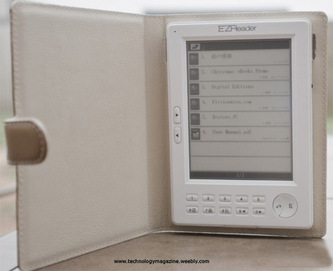
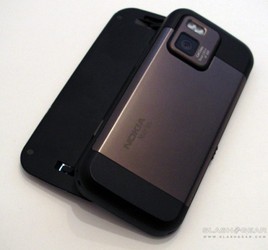
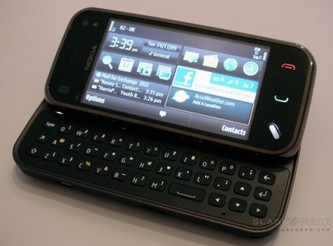
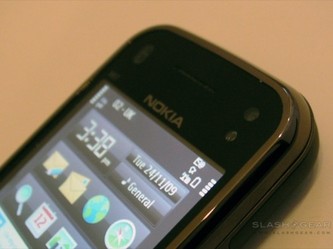
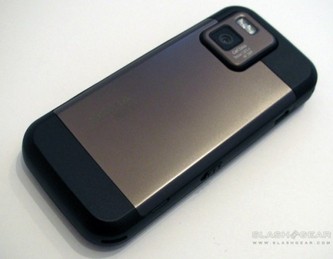
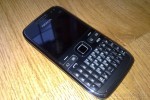
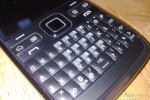

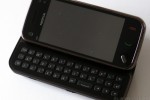
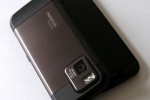
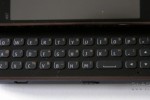
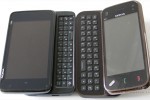

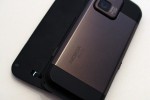
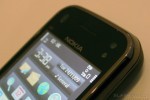
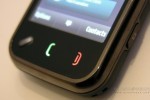
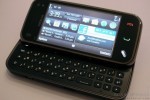
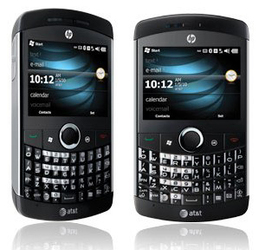
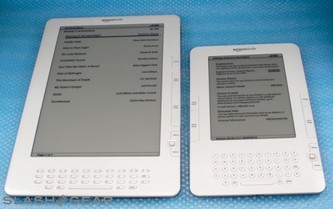
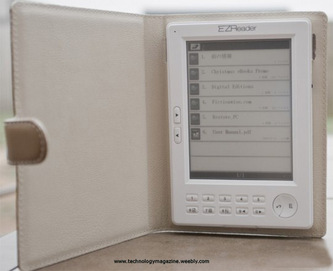
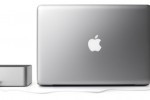
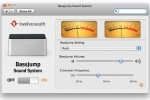

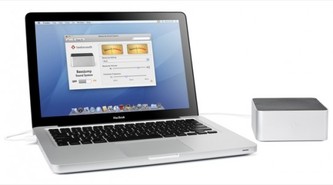
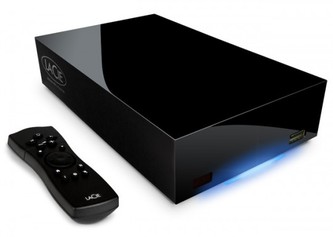
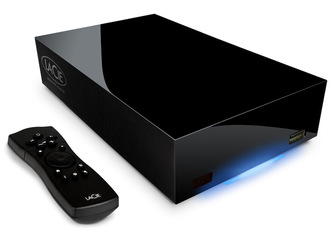
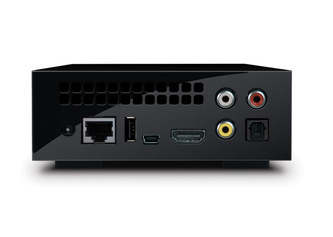
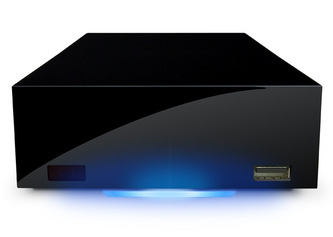
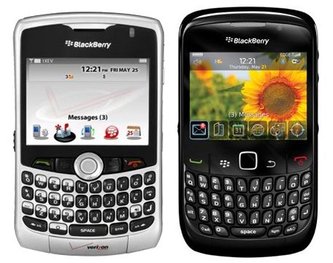

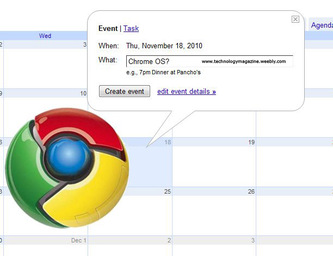
 RSS Feed
RSS Feed

